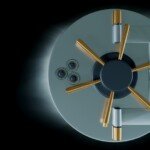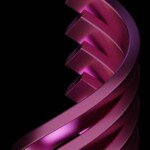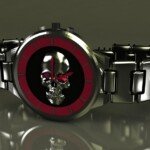Unlocking complex design: the function of aluminum extrusion precision CNC machining
Aluminum extrudates are everywhere in modern manufacturing. From smooth window frames and structural components in buildings to complex radiators in electronics and lightweight components in aerospace and automotive applications, their versatility stems from the ability to create near-mesh shape profiles relatively easily. However, fusing the profile of its extrusion into its final functional state often requires high precision, complex features and critical tolerances that the extrusion process itself cannot provide. Here, the precise CNC machining steps act as an essential final touch, converting the original or semi-formal extrusion into the precise design part that the modern world relies on.
Why extrude aluminum?
Before processing, understand Why Aluminum extrudates are so advantageous as starting point:
- Cost-effective overview: Compared to starting with solid blocks, the extrusion process effectively produces complex cross-sections (e.g. channels, T-slots, test tubes), thus minimizing material waste.
- Excellent material characteristics: Aluminum offers enviable strength to weight ratio, inherent corrosion resistance, good thermal conductivity and electrical conductivity, and is easy to process.
- Design flexibility: Almost endless outline shapes can be created that are customized for specific load-bearing, installation, thermal management or aesthetic needs.
- consistency: Once the die is created, the extrusion produces a consistent length of contour geometry.
The key role of precision CNC machining
Although extrusion defines the initial shape, implementing functional components usually requires:
- Precise cutting length: The extrusion is long; CNC sawtooth is essential for accurate, burr-free cutting and subsequent assembly or processing steps.
- Drilling and knocking: Creating mounting holes, fastener holes, ports or Clevis pins requires precise position, perpendicularity and line quality that cannot be guaranteed only by extrusion.
- Milling operation:
- Facial Milling: Creates a perfectly flat reference surface for sealing or mounting.
- Profile Milling (Contour): Shape complex exterior profiles beyond extrusion shapes or add features such as bevels and radii.
- Bag: Machine the internal cavity, slot or groove to reduce assembly or weight.
- T-Slot Milling: Secure the slots of the nuts and brackets to the exact size (e.g., DIN compliant).
- Turn (optional): For extrusions containing cylindrical elements or concentric features that need to be processed.
- Disassembly: Thorough removal of sharp edges and processed burrs is critical to safety, ease and ultimate appearance.
Why five-axis CNC machining is a game-changing extruder
Traditional 3-axis milling (X, Y, Z) fights complex extruded parts, often requiring multiple settings and manual repositioning. Five-axis CNC machining (adding rotation – A and Y-B axis around the X axis or using a tilt rotating table) revolutionizes the process, providing unique advantages that are perfect for extruded aluminum finishes:
- Single setting processing: The benefits of definition. The extrusion can be loaded once, and the cutting tool can approach the workpiece from almost any angle due to the simultaneous movement of the rotating shaft. This eliminates expensive and time-consuming repositioning between operations (such as drilling holes in one face and flipping to another), greatly reducing cycle time and set labor.
- Unparalleled accuracy and consistency: Repeated relocations introduce potential errors. Five-axis machining in a single setup eliminates this source of cumulative error, ensuring tighter tolerances (usually on critical functions or higher ±0.001 inches/±0.025mm or higher), an essential higher partial consistency for reliable assembly.
- Complex geometric shapes make it feasible: Need a hole that tilts on a curved surface? The side is perpendicular to the deep pocket of the mounting face? Complex 3D outlines? Five-axis excel at machining functions, which are impossible or expensive to produce on less functional machines. It unlocks design freedom that was previously limited by machining restrictions.
- Top surface finish: The ability to maintain optimal tool orientation relative to the cut surface enables tool paths and consistent chip removal capabilities, resulting in thinner surfaces that are directly off the machine on the machine, potentially reducing secondary operations.
- Extended tool lifespan: Smoother, more continuous cutting paths and optimized tool angles minimize tool chat and vibration, thereby reducing wear on cutting tools and reducing per capita processing costs.
- Effective production of long profiles: Modern 5-axis machines with extended travel capabilities can effectively machining the entire extrusion length without sacrificing accuracy, ideal for structural components or architectural elements.
Beyond original processing: the value of one-stop service
The journey from extrusion to the finished product part usually does not stop at the finished product size. Work with manufacturers that provide comprehensive post-processing to maximize efficiency:
- Secondary completion: Anodizing (enhanced corrosion resistance/wear/aesthetics), powder coatings, paintings, chemical films (e.g., chromate conversion coatings), polishing.
- Surface treatment: Sand blasting, bead blasting for texture or cleaning.
- Non-destructive testing (NDT): Dye penetrant checks the welded joint or critical surface.
- Integration: Combine inserts, bearings, fasteners or bond multiple components.
- Kits and Packaging: Offer ready-made assembly solutions.
GRESTLIGHT: Your companion’s precise aluminum extrusion processing
Greatlight Arts is ready when it is required to accurately meet the unique challenges of machining extrusion. As a professional five-axis CNC machining manufacturer, we utilize state-of-the-art equipment and deep process expertise. We understand the nuances of ensuring and machining extrusions (often requiring special fixtures) to achieve tight tolerances, complex geometry and impeccable finishes.
Our capabilities in precise CNC machining exceed standard five-axis tasks. We excel in programming optimized tool paths that leverage the full potential of the machine to effectively convert aluminum extrusion into high-value components. Crucially, we provide authentic One-stop service. From precise machining and finishing to assembly preparation, we manage the entire process internally. This vertical integration minimizes latency, ensures strict quality control at each stage, and provides you with a responsible partner.
Whether you need rapid prototypes or high-volume production runs in various aluminum alloys, Excellent quality at competitive prices. We optimize manufacturing strategies specifically for metal parts to ensure effective production without compromising accuracy.
in conclusion
Precision CNC machining is the necessary bridge to extrude multifunctional aluminum and convert it into complex functional components. Although 3-axis machining occupies its position, the emergence of five-axis technology fundamentally improves possible problems, achieving unparalleled complexity, accuracy and productivity, especially for long-term or complex extrusions.
Choosing a manufacturer with proven five-axis expertise, strong post-processing capabilities, and commitment to a comprehensive service like Greatlime is not only a purchase decision; it is an investment in design freedom, manufacturing reliability and ultimate product excellence. We can effectively and effectively solve complex metal parts manufacturing problems and provide exactly what we need when needed.
Ready to lift your aluminum extrusion project? Do not meet the limitations; utilize the function of precision five-axis CNC machining. Contact Greatlight today to discuss your custom requirements and discover how we deliver high-quality, perfectly finished parts at the best value.
FAQ: Accurate CNC machining of aluminum extrusion
Q1: Why can’t I just use extruded configuration files? Why process them?
A: Extruded configuration files are ideal for basic shapes. However, they lack precise dimensions, holes, excavated lines, complex pockets, mounting surfaces, and specific tight tolerances usually required for functional components, electronic installation, structural integrity or interfaces with other components. The machining adds key functional details beyond what the extrusion provides.
Q2: What typical tolerances can 5-axis CNC achieve in aluminum extrusion?
A: This depends to a lot on the specific function, part size and machine stiffness, but Great Usually maintained ±0.001 inches (±0.025 mm) In a single setup, the key features and locations of our high-precision five-axis equipment. Compared to local small features, a larger overall profile will naturally have a larger tolerance band.
Q3: What aluminum alloys are usually processed from extrusion?
A: The most popular ones include:
- 6061-T6: Excellent all-round, strength and solderability. The default choice for many structural and mechanical applications.
- 6063-T5/T6: Slightly below 6061, but offers excellent extrusion, aesthetics and finishing features. Widely used in construction and consumer goods.
- 6005A-T5/T6: Similar to 6061, larger structural extrusion is usually preferred due to its extrusion characteristics.
- 2024-T3/T4/T351: High strength aerospace alloys, good processability, but low corrosion resistance (usually required for coating or coating).
- 7075-T6: The highest strength aluminum alloys that can usually be provided by extrusion. Excellent workability, but low crack resistance, making it difficult to extrude complex profiles.
Question 4: What are the challenges of processing extrusion and solid blanks?
A: Extrusion is usually less rigid than solid steel blocks. This requires caution:
- fixed: Ensure that the profile of thin walls is sometimes critical for a long time without distortion. Special jaw or fixation devices are usually required.
- Tool path optimization: Technology must minimize chatting and vibration, i.e. thin walls or unsupported parts are prone to occur.
- Stress Consideration: The residual stress of the extrusion process itself sometimes causes less warping during processing, requiring careful sequencing and compensation strategies.
Q5: What are the main advantages of 5-axis over 3-axis?
Answer: The main advantages are:
- Eliminate multiple settings: A setting for almost all features = faster throughput, lower labor costs, and lower error risk.
- Complex geometric access: Processing function at any angle without repositioning.
- Improve accuracy: Minimize cumulative tolerance stacking.
- Better finishes: Continuously optimized tool path.
- Long parts capability: Effective high-precision machining of the entire contour length.
Q6: Which aftertreatment finishes are compatible with processed aluminum extrusion?
A: Almost all standard finishes are good:
- Anodized (e.g., type II, type III – hard coat): Increases corrosion/wear resistance and provides color selection (transparent, black, color).
- Powder coating: Durable, wide color range, excellent corrosion/UV resistance.
- Liquid paint: Various spray paints for color and protection.
- Chemical films (Chromate, Alodine): Thin and transparent coating provides corrosion resistance and improved paint adhesion.
- Mechanical finish: Sandblasting, bead blasting, brushing, polishing, texture/appearance.
- Digital printing: Add graphics/logo.
Q7: What size/weight parts can be processed?
Answer: This is what the machine depends on. Great With multiple five-axis CNC centers with a variety of table sizes and travel capabilities, we are able to handle the extrusion of small parts that are only a few inches long, reaching a considerable structural membership with a high length. Contact us through your specific dimensions and weight estimates.
Q8: Can Greatlight bypass the rapidity of precisely machined extruded parts?
A: We specialize in rapid prototyping and flexible production. Depending on design complexity, quantity and completion requirements, delivery times vary greatly. Rapid prototypes can usually be delivered in days or weeks. Production volume has been optimized to improve efficiency. Discuss your schedule requirements when requesting a quote; we strive to adapt to a proactive schedule.

















